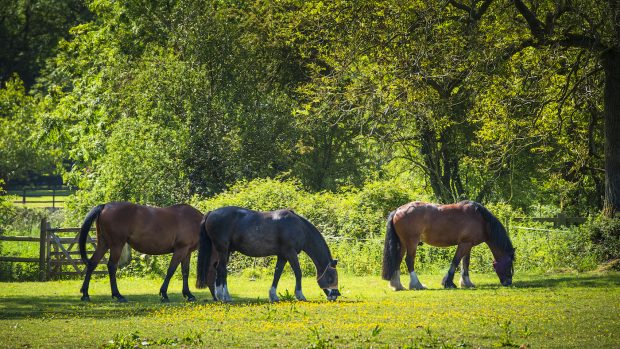Horse owners are urged to be on the look out for signs of the fatal condition atypical myopathy this spring, as experts in Belgium anticipate more cases across Europe.
The often fatal illness weakens the muscles of the skeleton and heart and can present with colic-like signs.
“From the retrospective studies we have learned that, when a large number of cases of atypical myopathy was recorded in the fall [autumn], many new cases are encountered in the following spring,” said a spokesman from the University of Liège.
“Unfortunately, spring 2014 could record a large number of deaths.”
The university recorded 415 cases across Europe between last autumn and this spring, and has recently been told of 3 more cases.
Last year, research by the university linked the mysterious fatal condition to the sycamore tree (news, 27 June 2013).
In the autumn, British vets put out a warning to keep horses away from these trees, after a rise in cases (news, 5 December 2013).
And now, with the current climatic conditions, seeds have begun to germinate. Victims are usually young horses, often kept on sparse pasture where dead leaves are on the ground.
“Owners need to be aware of the possible risk of grazing near suspect trees, such as sycamores,” said H&H vet adviser Karen Coumbe.
“It appears that the chance [of picking up the condition] is lower if there is good grazing, when horses are less likely to eat tree seeds or leaves. These may contain the toxin hypoglycin-A — which has been linked with atypical myopathy.
“This toxin is not always present in every seed, or in seeds from every tree. This makes it difficult to predict whether a particular horse will become ill when exposed.
“As the weather improves, the chance of cases occurring may diminish, but care must still be taken.”
Signs of atypical myopathy include:
- Shivering
- Sweating
- Collapse
- Fatigue
- Colic-like symptoms
Research for the condition is not subsidised. To help the University of Liège with funding for research visit: www.myopathieatypique.fr
This article was first published in Horse & Hound magazine (10 April 2014)





